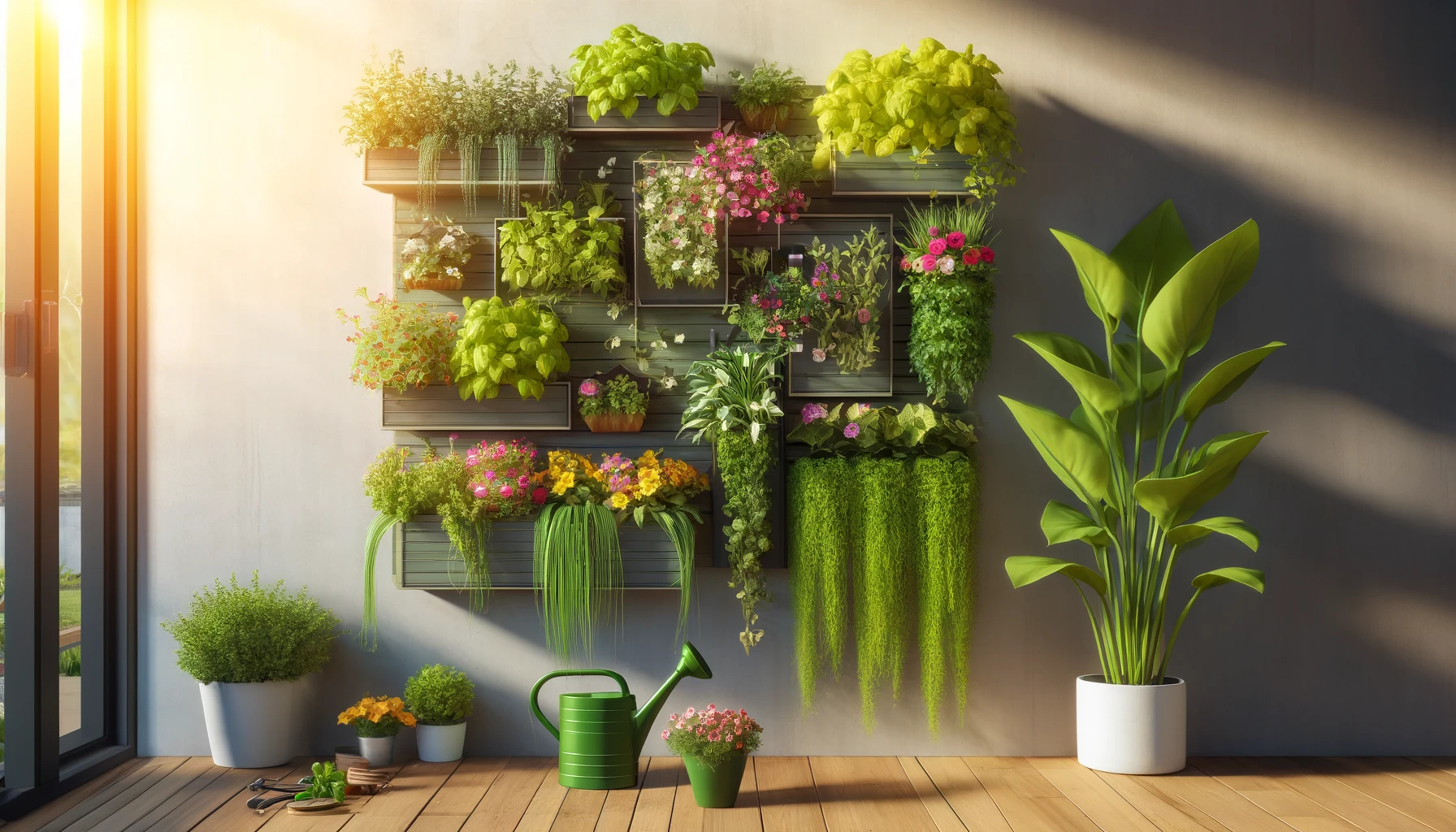Vertical gardens are a creative and space-saving way to bring greenery into your home or outdoor spaces. Whether you want to grow herbs, flowers, or decorative foliage, a vertical garden is an excellent solution for adding life to walls and small areas. In this guide, we’ll walk you through the steps to create and maintain a thriving vertical garden.
What Is a Vertical Garden?
A vertical garden is a method of growing plants on a vertical surface, such as a wall or a freestanding frame. It’s an innovative approach to gardening, especially for those with limited horizontal space. Vertical gardens can be as simple as a few hanging pots or as elaborate as a full wall covered in lush greenery.
Benefits of Vertical Gardening
- Space-Saving: Perfect for apartments, balconies, or small yards.
- Aesthetic Appeal: Adds a unique visual element to your space.
- Improved Air Quality: Plants in vertical gardens help purify the air and reduce indoor pollutants.
- Better Insulation: Outdoors, vertical gardens can provide insulation, keeping spaces cooler in summer and warmer in winter.
- Versatile: Suitable for growing herbs, vegetables, flowers, and ornamental plants.
Planning Your Vertical Garden
1. Choose the Location
Select a wall or structure that gets the right amount of light for the plants you plan to grow. For indoor gardens, a south-facing wall with indirect light is ideal. Outdoors, ensure the wall receives sufficient sunlight or shade based on the plants’ requirements.
2. Decide the Type of Vertical Garden
- Wall-Mounted Planters: Individual pots or planters attached to a wall.
- Hanging Baskets: Ideal for trailing plants like pothos or ivy.
- Pocket Panels: Fabric panels with pockets to hold plants and soil.
- Freestanding Frames: Movable structures that can support multiple plants.
3. Select the Right Plants
Choose plants based on light, water, and space availability.
- Herbs: Basil, parsley, thyme, mint, and cilantro.
- Vegetables: Lettuce, spinach, cherry tomatoes, and peppers.
- Flowers: Petunias, marigolds, and fuchsias.
- Ornamentals: Ferns, pothos, succulents, and philodendrons.
4. Prepare Your Materials
Gather the materials you’ll need, including:
- A sturdy frame or wall-mount system.
- Pots, containers, or pocket panels.
- Well-draining soil or a potting mix suitable for your plants.
- A watering system or spray bottle.
Building Your Vertical Garden
Step 1: Install the Framework
Attach the frame, pockets, or planters securely to the wall. Ensure the structure can handle the weight of the plants, soil, and water.
Step 2: Add Soil and Plants
Fill each container with well-draining soil and place your plants inside. Arrange them strategically, with larger plants at the bottom and smaller ones at the top to ensure even light distribution.
Step 3: Set Up a Watering System
Install a drip irrigation system for convenient and consistent watering. For small setups, hand-watering with a spray bottle or watering can works well.
Step 4: Provide Proper Lighting
Ensure the plants receive adequate light. For indoor gardens, use grow lights if natural light is insufficient.
Caring for Your Vertical Garden
1. Watering
Vertical gardens dry out faster than traditional ones, so monitor moisture levels frequently. Water at the base of each plant to prevent waterlogging or fungal issues.
2. Pruning and Maintenance
Trim dead leaves and overgrown stems regularly to keep your garden looking neat and healthy. Check for pests and remove any weeds.
3. Fertilizing
Feed your plants with a balanced fertilizer during their growing season. Use water-soluble fertilizers for easy application in vertical gardens.
4. Rotate Plants as Needed
If certain plants aren’t thriving, rotate their positions to ensure they receive the light and water they need.
Creative Vertical Garden Ideas
- Kitchen Herb Garden: Mount pocket panels near your kitchen to grow fresh herbs for cooking.
- Succulent Wall: Create a stunning display with low-maintenance succulents in a frame.
- Living Privacy Screen: Use a freestanding frame with climbing plants to create a natural partition.
- Seasonal Flower Wall: Rotate flowers seasonally for a fresh, colorful display year-round.
Challenges and Solutions
- Drying Out Quickly: Use soil with water-retention additives and mulch the surface to reduce evaporation.
- Structural Stability: Ensure the wall or frame can support the garden’s weight. Reinforce if necessary.
- Pests: Regularly inspect plants for pests and treat infestations promptly with natural remedies or insecticidal soap.
Conclusion
A vertical garden is a beautiful and functional way to add greenery to your living space. With proper planning and care, you can create a lush, thriving display that transforms any wall into a work of art. Whether you’re growing herbs, flowers, or decorative plants, a vertical garden offers endless possibilities for creativity and enjoyment.
